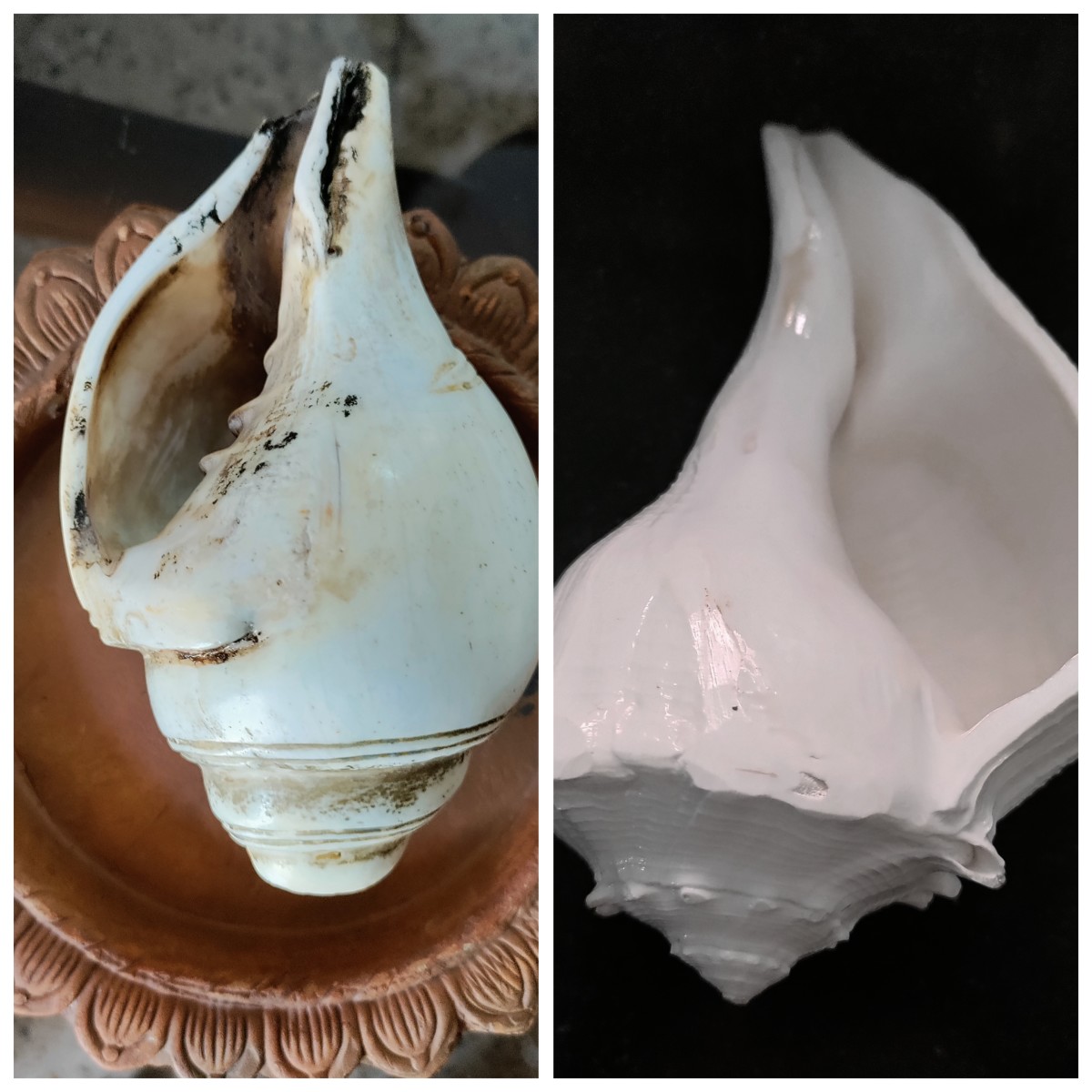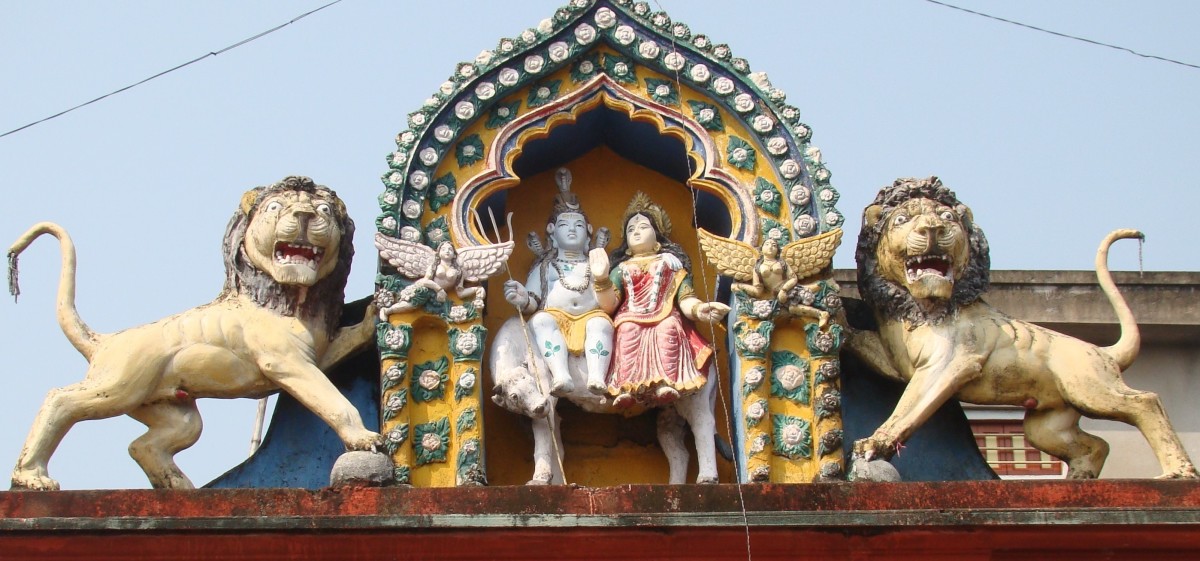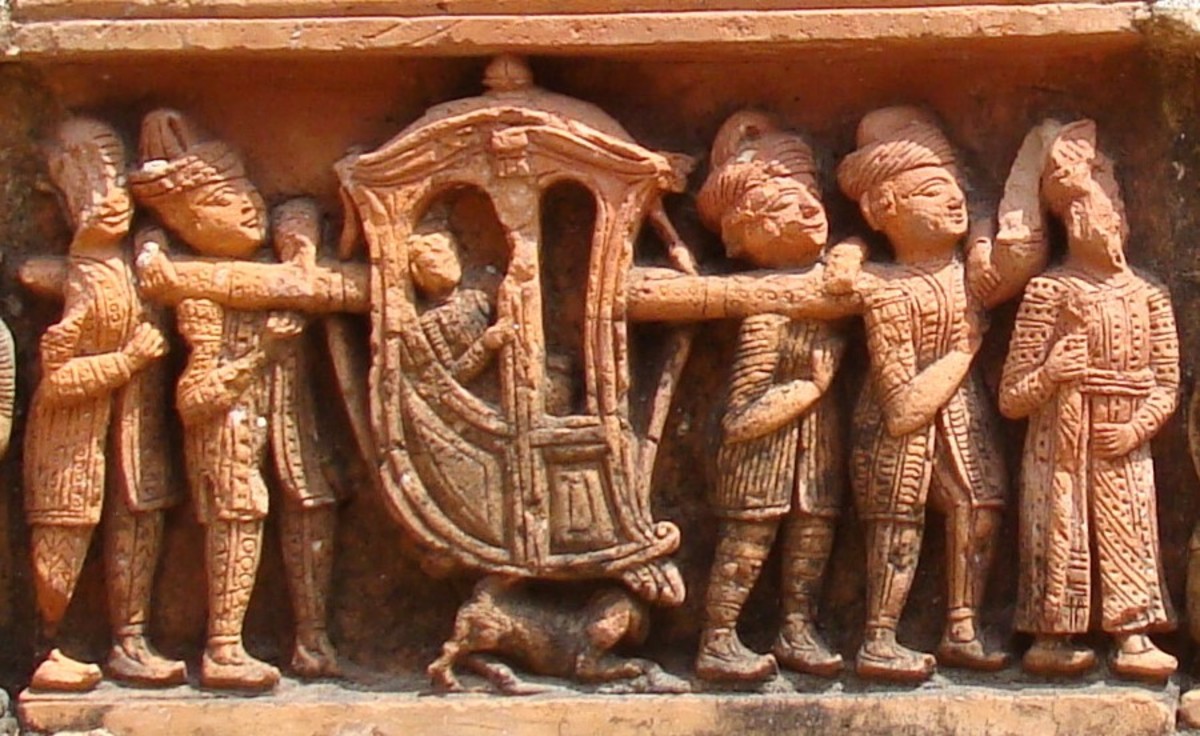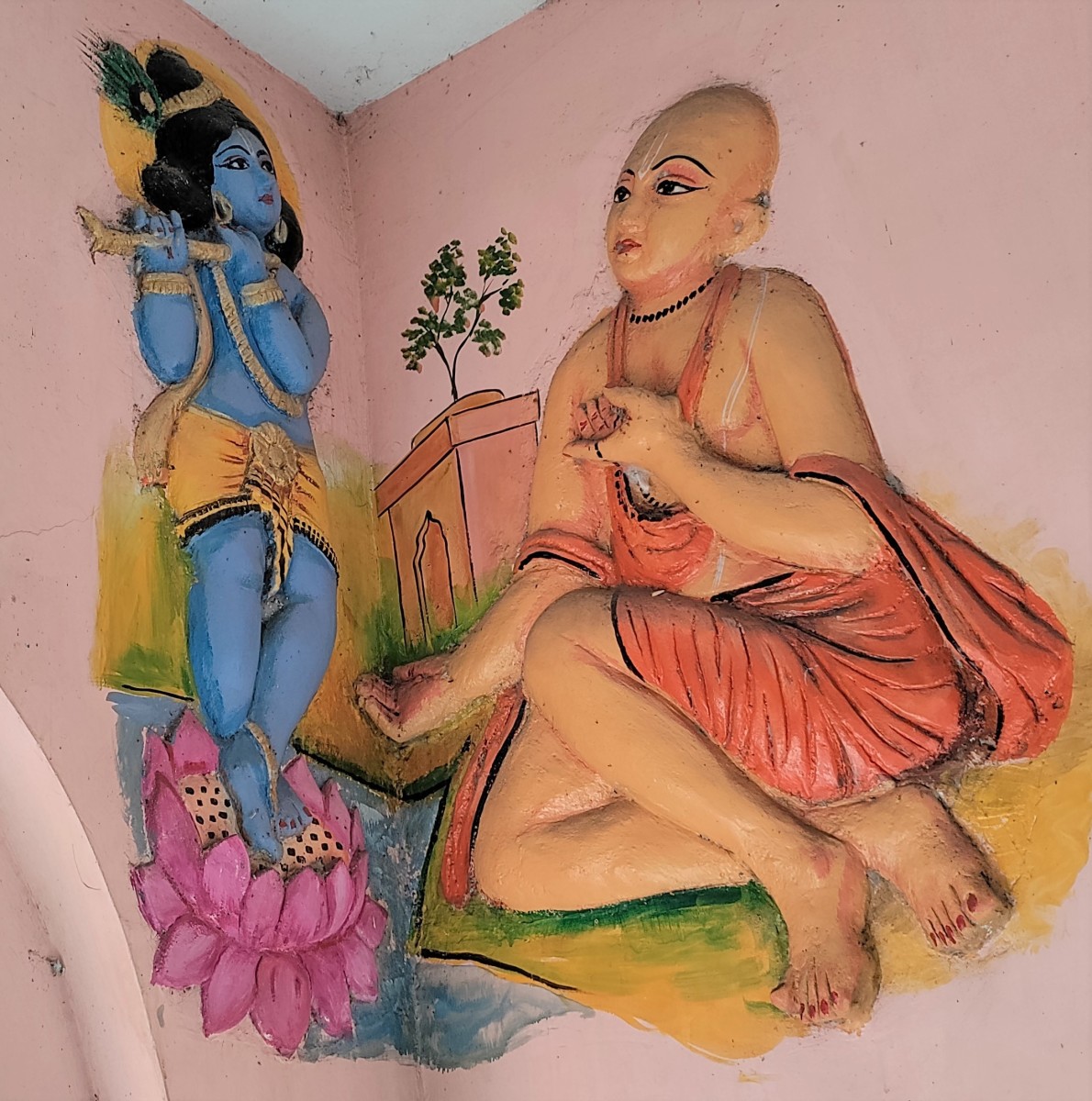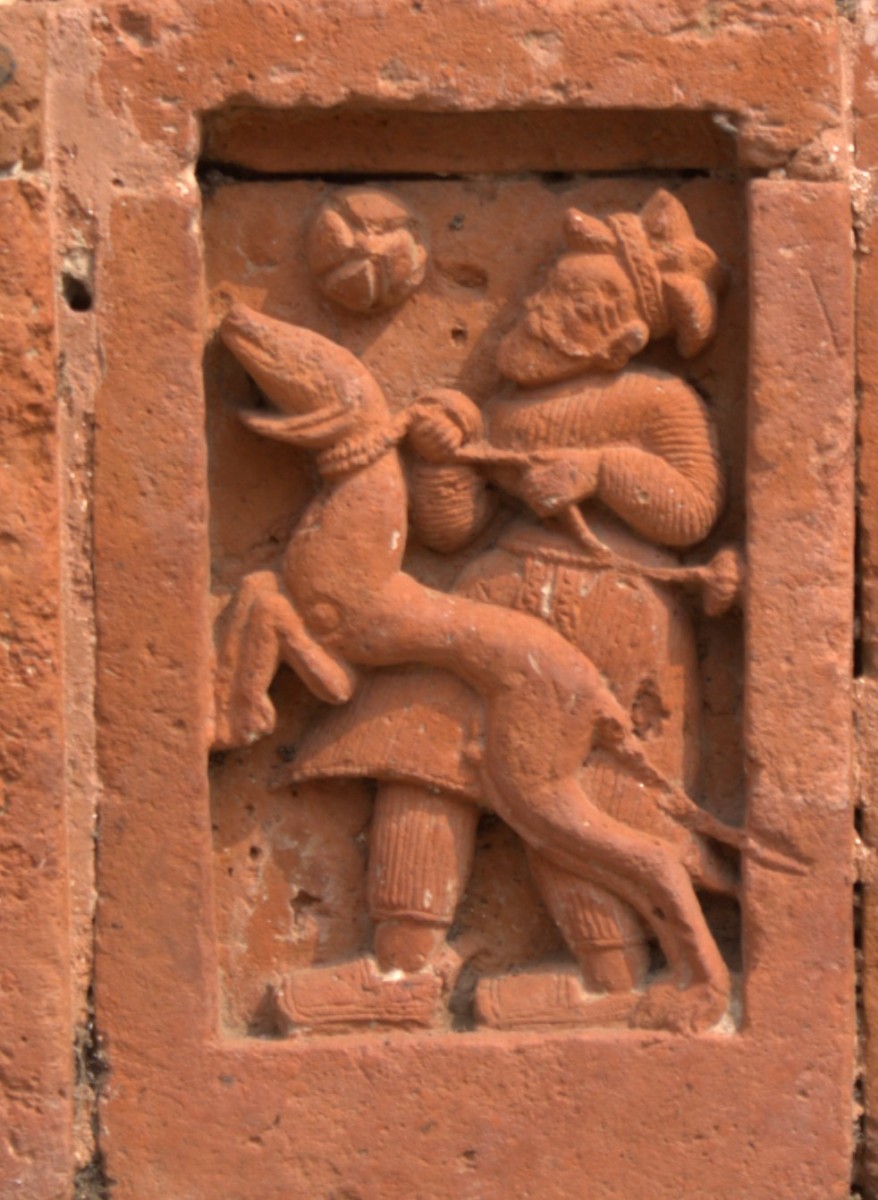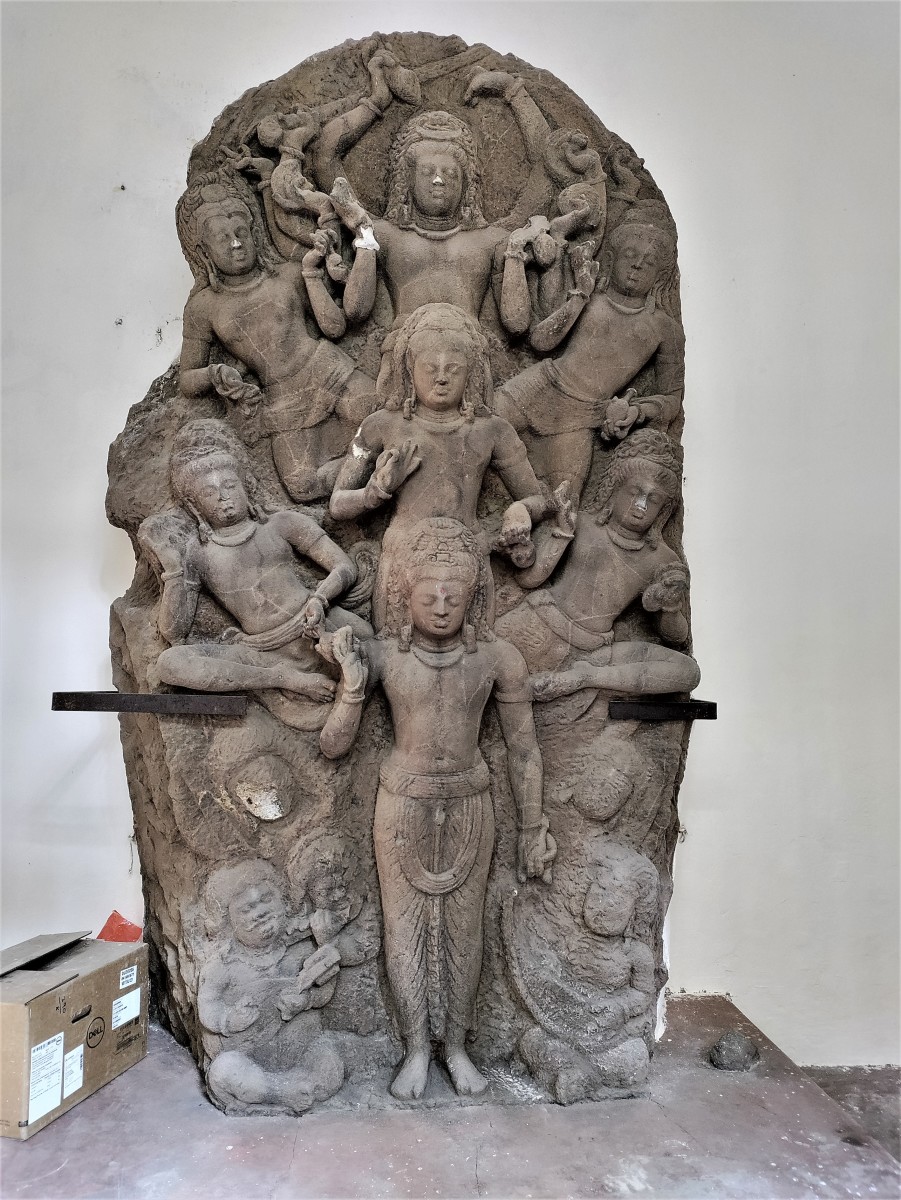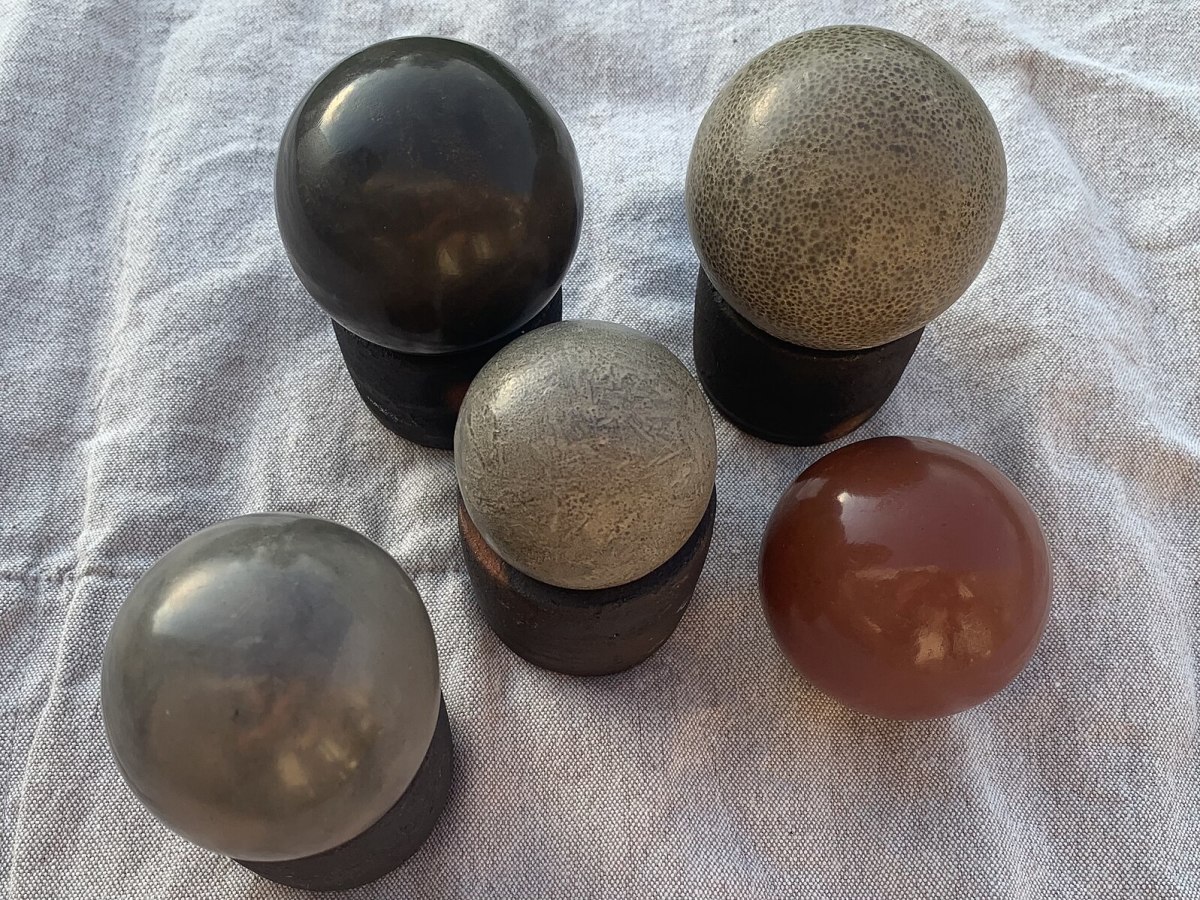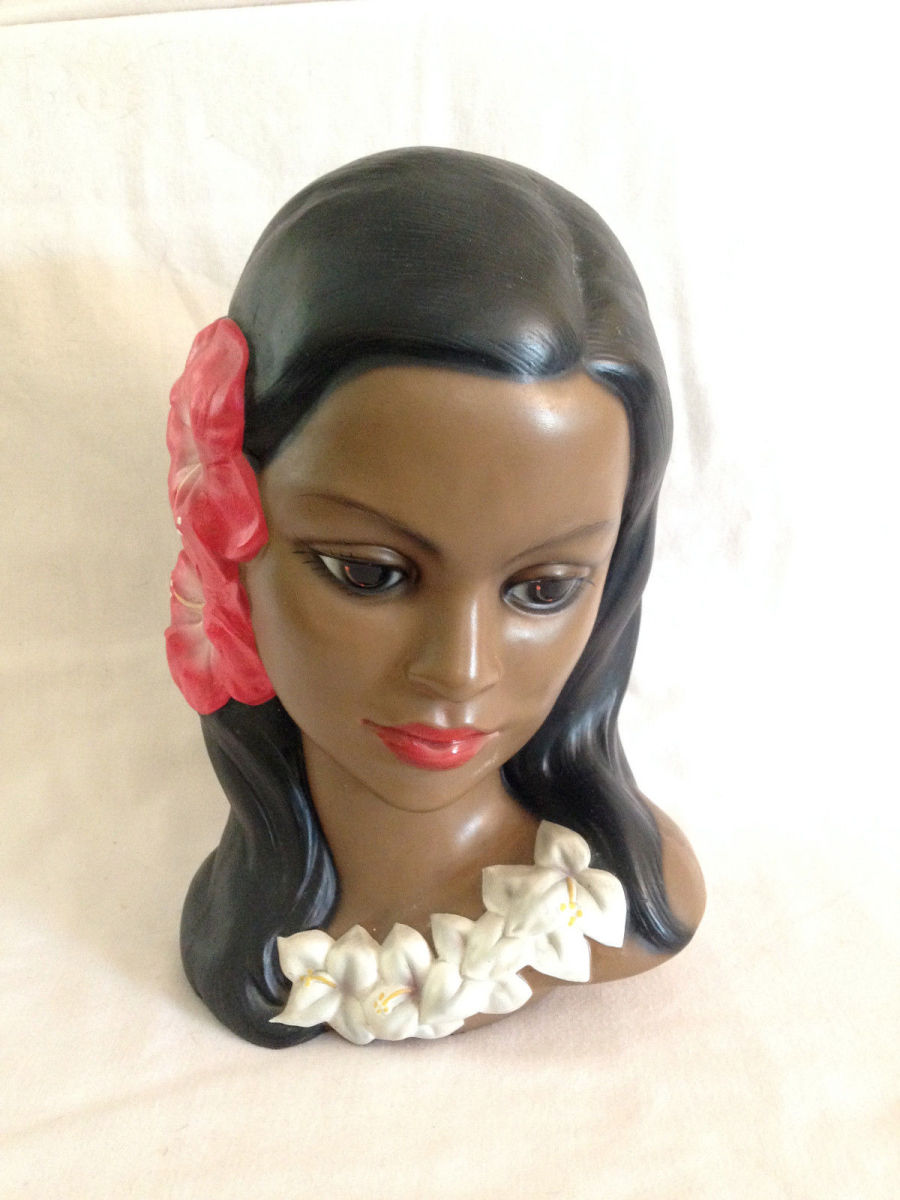Dance and dancers in West Bengal temple decoration
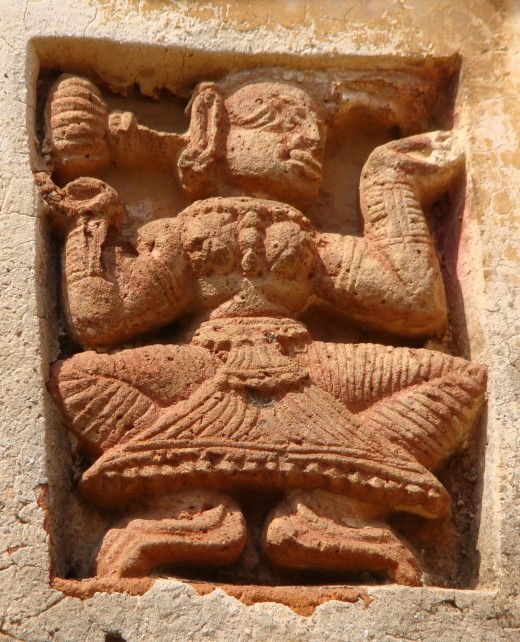
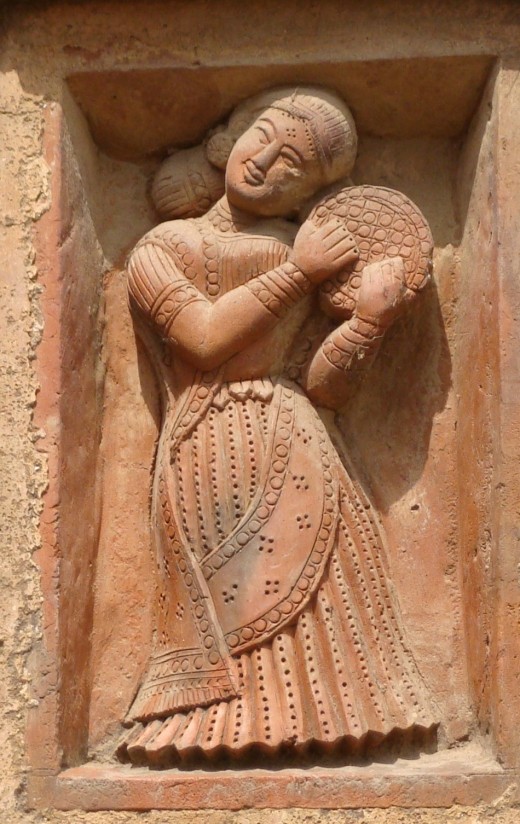
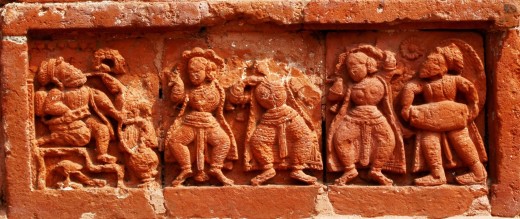
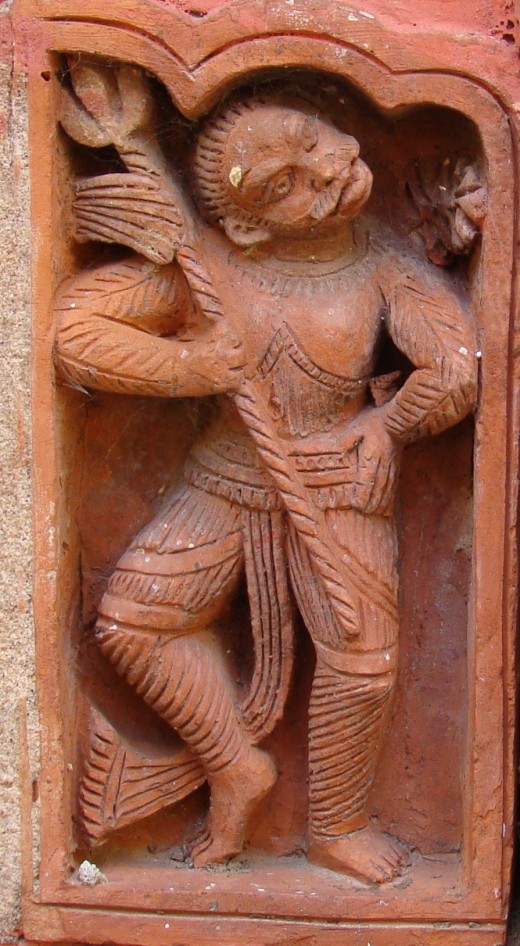
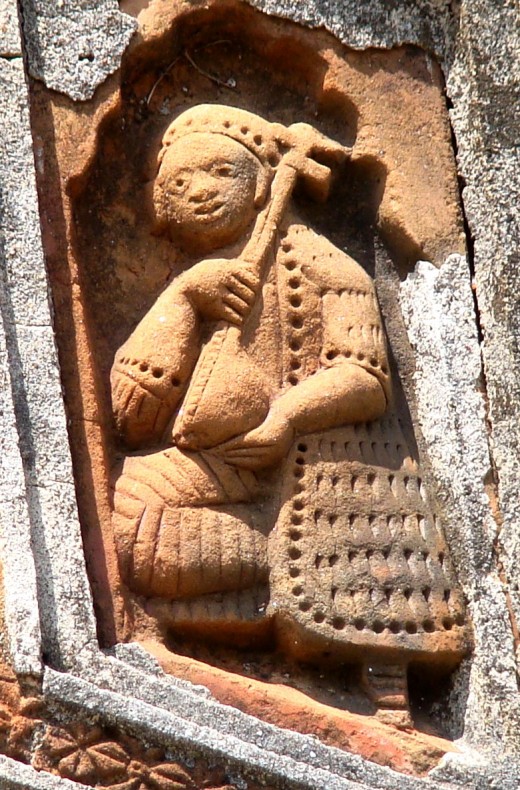
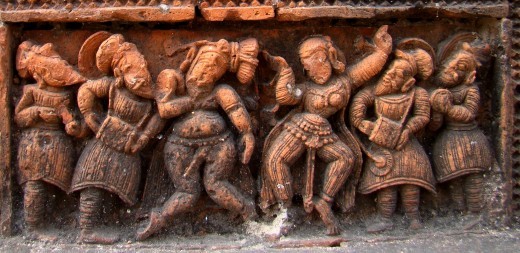
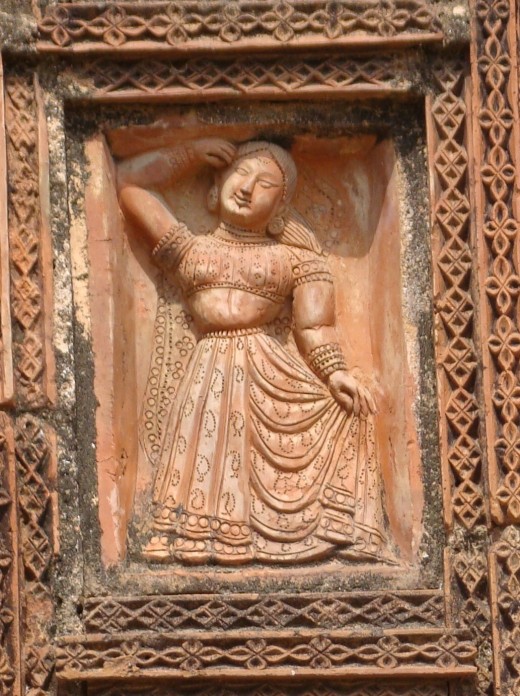
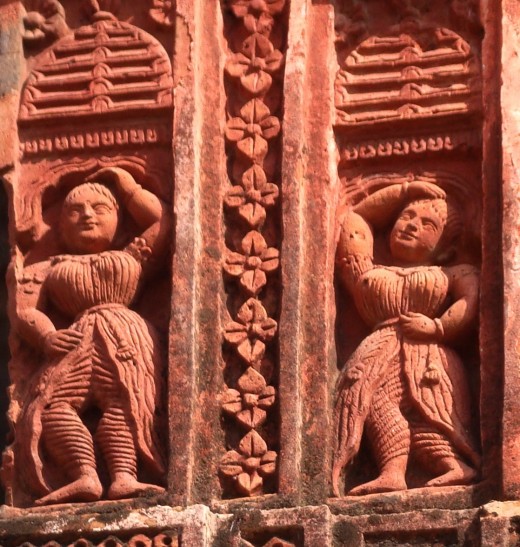
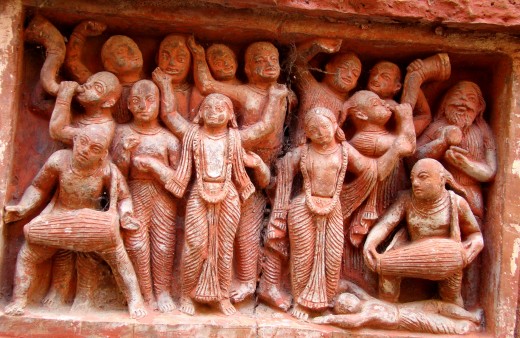
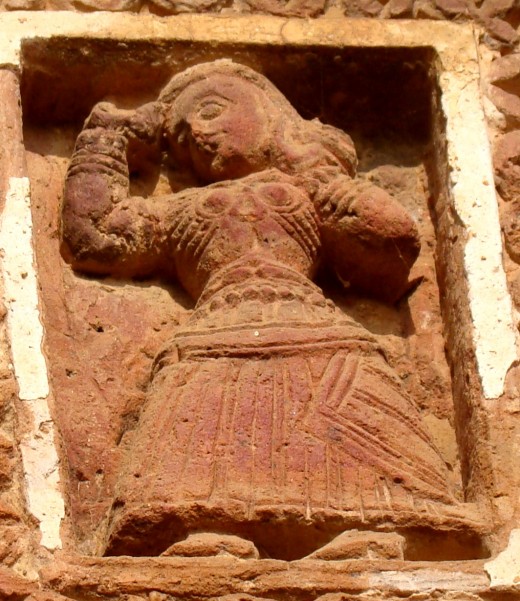
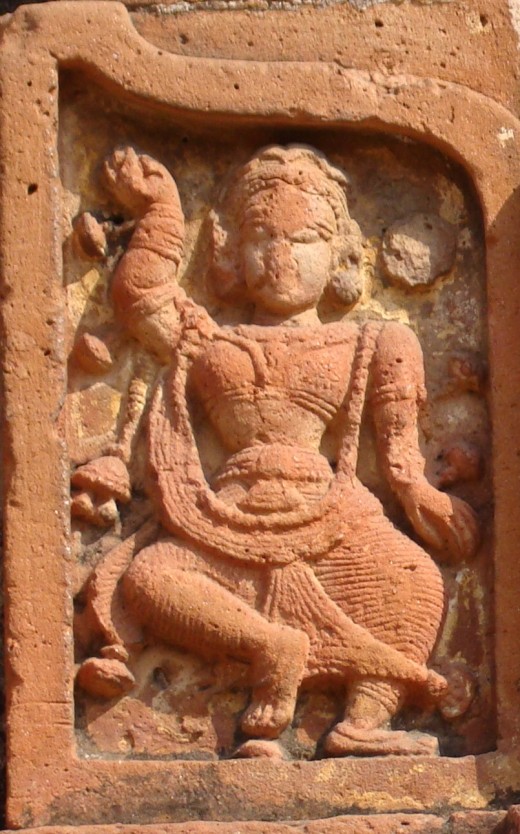
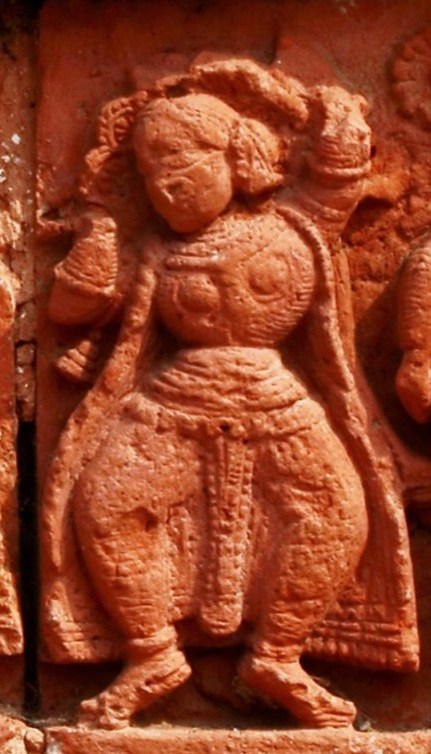
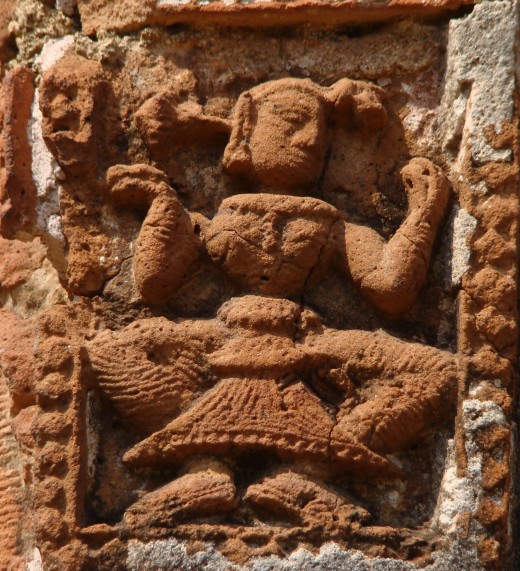

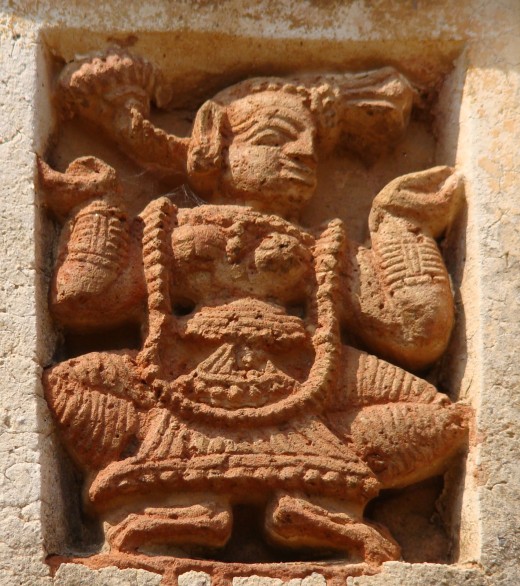
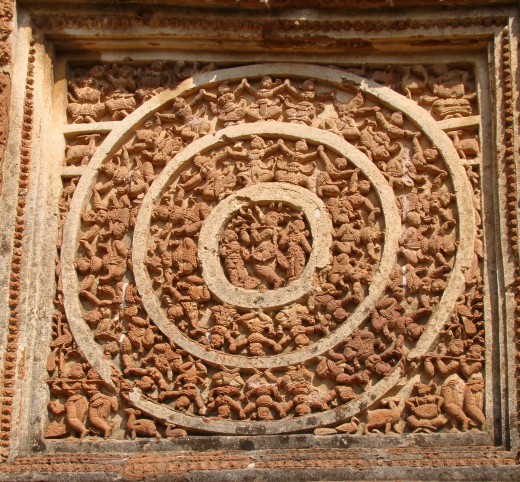
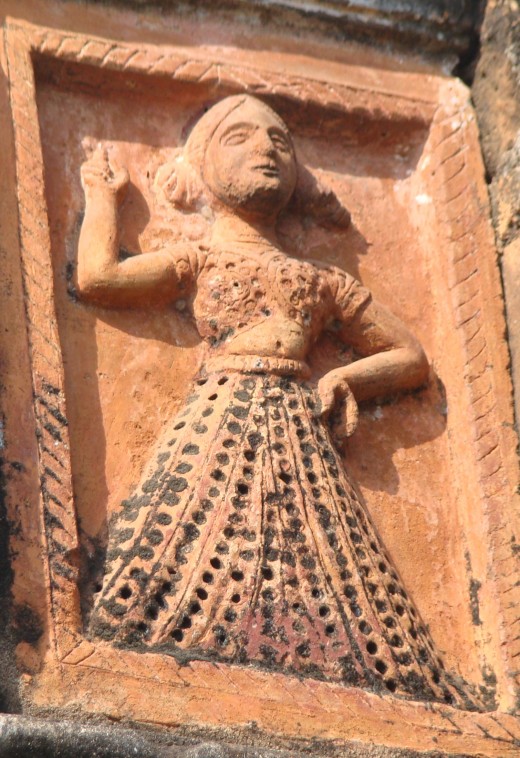
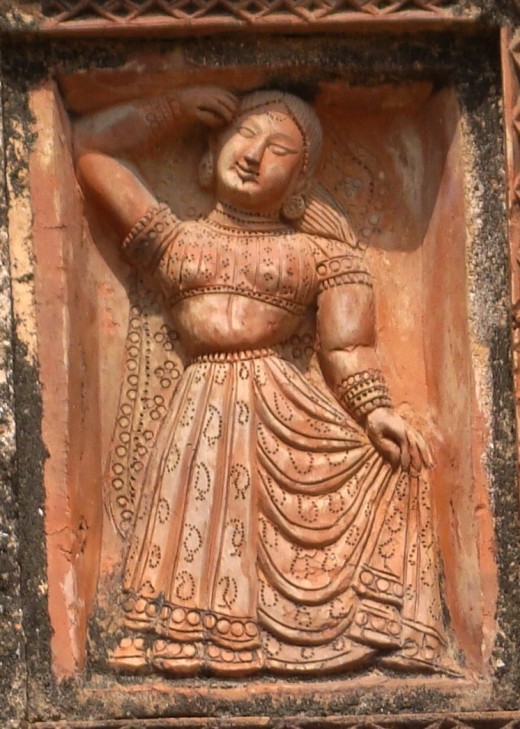
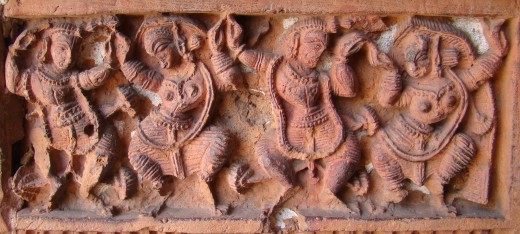
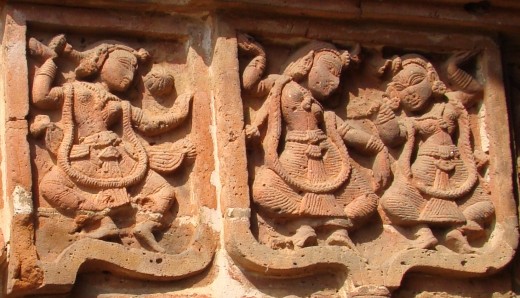
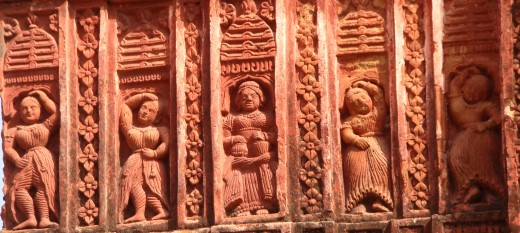
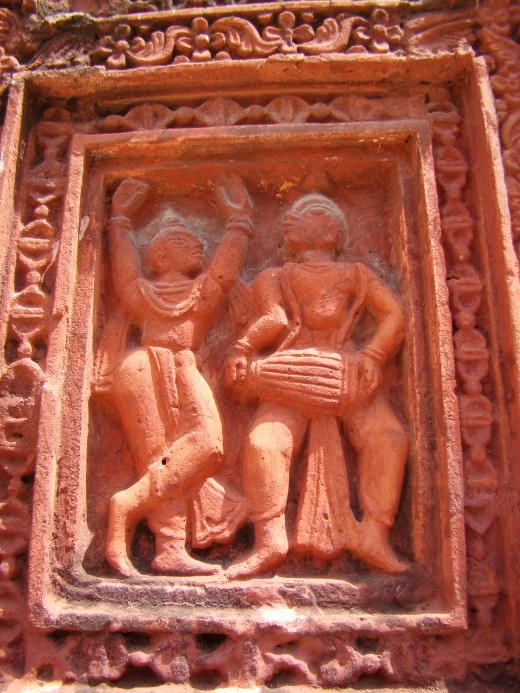

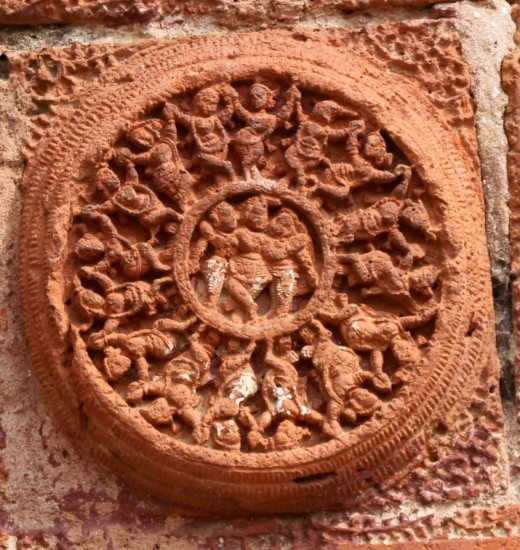
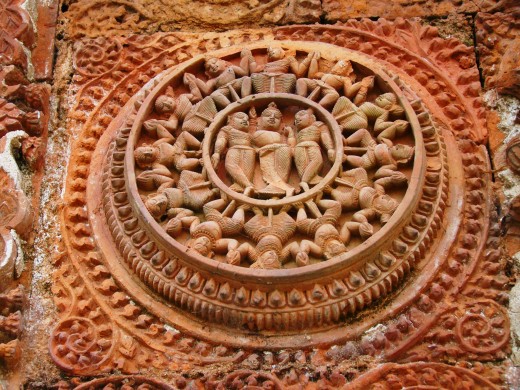
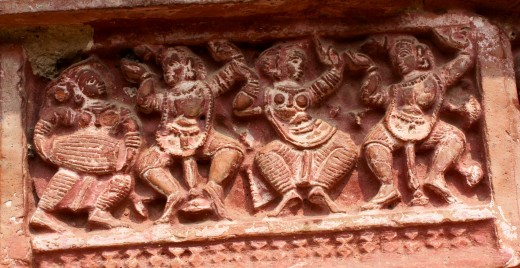
Many of the temples in West Bengal have figures of dancers as decorations, mainly in terracotta. These figures are used for two purposes :
A. As part of the religious ritual.
B. As part of social life.
A. Dance as part of the religious ritual :
Dance as a means to worship God is well accepted in almost all religions. Hindu temples traditionally had a class of female dancers called DEVADASI-s who regularly danced in front of the deity as part of ritual.
In medieval Bengal, artists freely used the legends of Lord Krishna & His divine consort Radha to express many sensual events & dance was not an exception. In almost all temples in Bengal we thus see figures of Radha & Krishna dancing, often is association with Gopini-s, the female associates of Radha. One important artistic depiction of the dance of Radha & Krishna along with Gopini-s is RASMANDAL, where the dancers are presented in two or three concentric circles with Radha & Krishna at the centre.
Besides this, many devotees & ascetics used to dance as part of worship :-
Sri Chaitanya Deva, the great religious teacher who initiated a form of Vaisnavite (followers of Lord Vishnu) religious movement in 15th century Bengal also introduced a form of devotional song called KIRTAN or NAM-SANKIRTAN (Hymn praising the Lord) accompanied by dance.
The Shaivite ascetics (followers of Lord Shiva) also had their own dance form which is still practised in rural Bengal, particularly during the festival of CHARAK in the month of April.
Bauls, the roving minstrels of Bengal, have their own special songs accompanied by dance.
In temple terracotta art, all these types of dances are well represented.
B. Dance as part of Social life :
Dance is always an inseparable part of social life from time immemorial. These may be classical, or folk type. In India, there are eight classical types of dances & innumerable folk dances. Dance & dancers were always patronized by landlords & the rich. One important part of this genre was the dance performed by the BAIJI-s (Dance /Nautch girls) who were imported from the city of Lucknow or Benares in Uttar Pradesh. Baijis were well trained in different forms of dances, particularly Kaththak, the classical North Indian dance, & they spread their dance forms in Bengal.
In British period, this tradition continued & in addition, Western dances were introduced to Bengal.
Another important class of dancers was the BADIA-s or the gypsies. Usually of non-Bengali origin, the Badias introduced a form of folk dance which was vigorous & often contained an overdose of sexual element.
All these social events are well represented in the terracotta & other types of temple decorations.
Types of dance forms :
1. Classical :
i) Gaudiya Nritta : It requires special mention as because this is the predominant dance form that is seen in temple decorations. Gaudiya means “Of Old Bengal” & Nritya means dance. This is an ancient dance form having many similarity with Odissi dance, & was the dominant classical dance practised in ancient & medieval Bengal. The terracotta artists thus utilized this dance form freely in temple decorations.
ii) Kaththak: Introduced by North Indian dancers brought by kings & landlords to perform in their courts, this dance form can be seen in some temples, but not very common.
2. Folk dances and other non-classical dance forms :
i) Baul dance;
ii) Dance with Kirtan;
iii) Shaivite dance (Tandava Nritya);
iv) Baiji dance;
v) Badia dance;
vi) Miscellaneous.
All these different dance forms are well represented in temple decoration, chiefly in terracotta plaques .
Conclusion :
This is a huge subject & the present article is just a glimpse into it.

